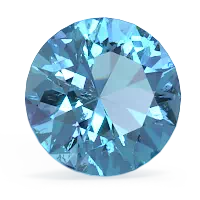

The celtic knot is an ancient symbol of the journey of life. With no beginning and no end, the knot represents the timeless nature of our spirits and the world we live in. A Aquamarine celtic knot combines these concepts with the spiritual attributes of the Aquamarine . Wearing an aquamarine is said to help couples smooth out their differences and reawaken their love for each other making an aquamarine pendant the perfect anniversary present. Blue Topaz is known as the gem that has the power to improve one’s communication skills. A blue topaz pendant may make you a more eloquent and confident speaker.